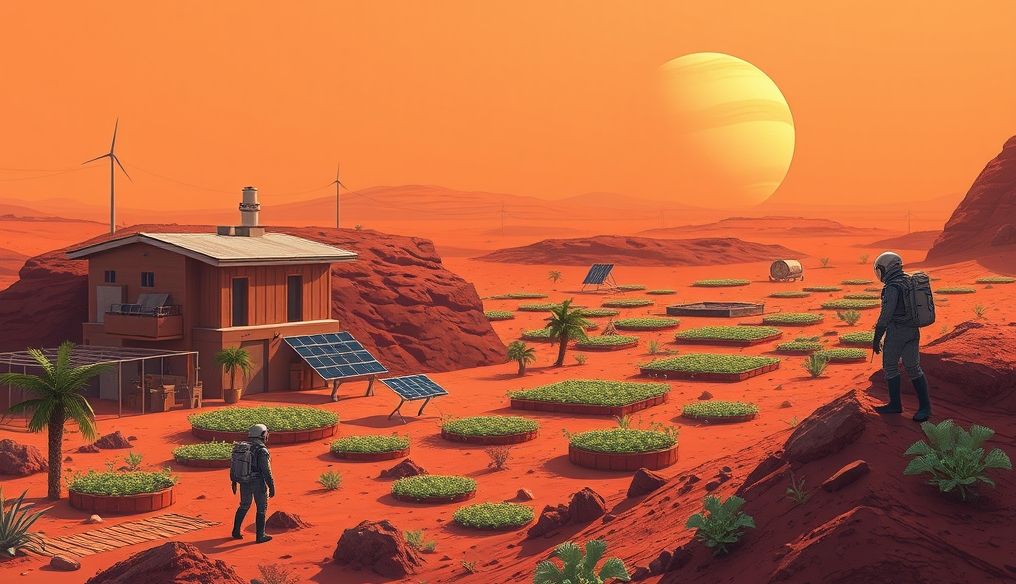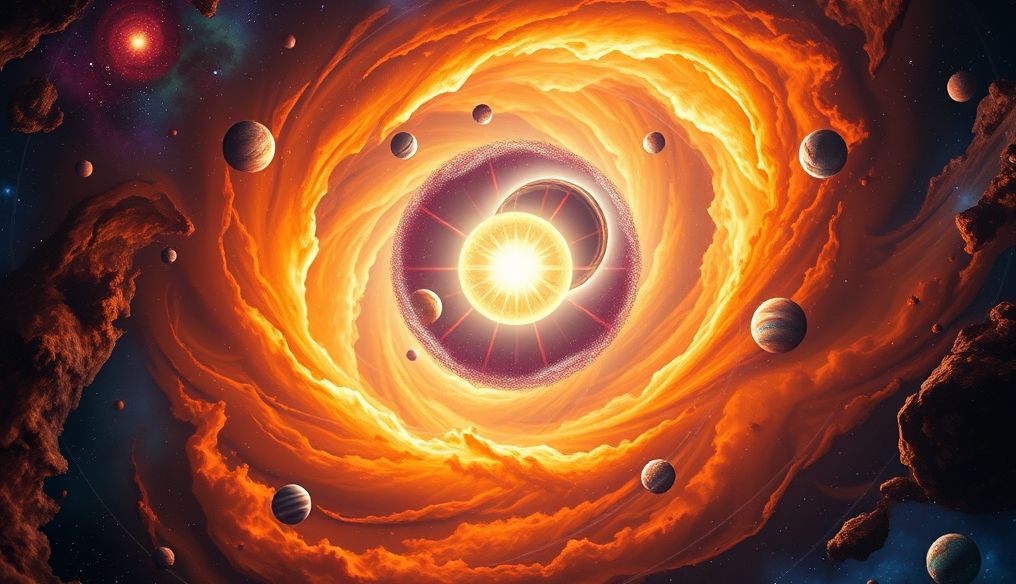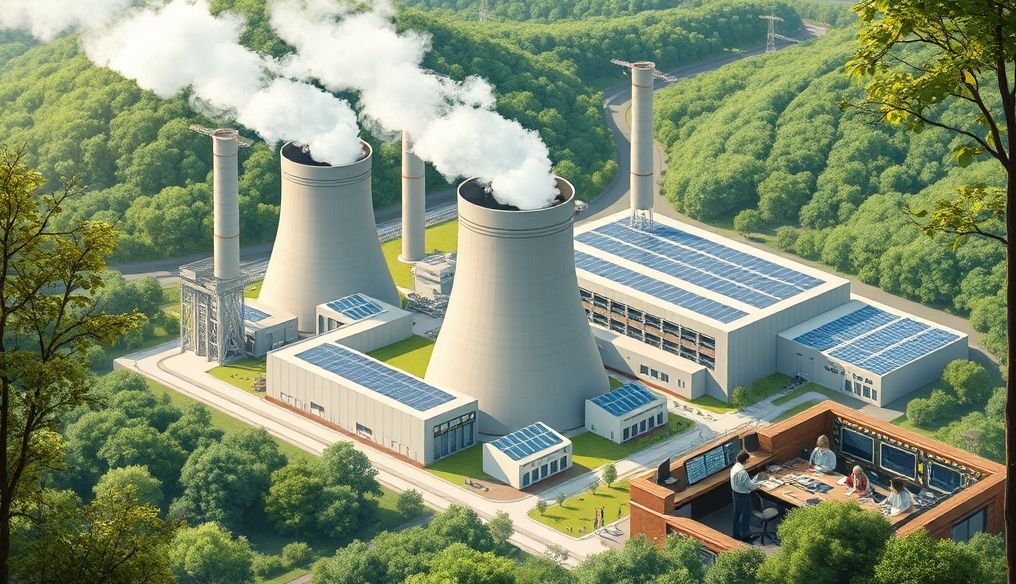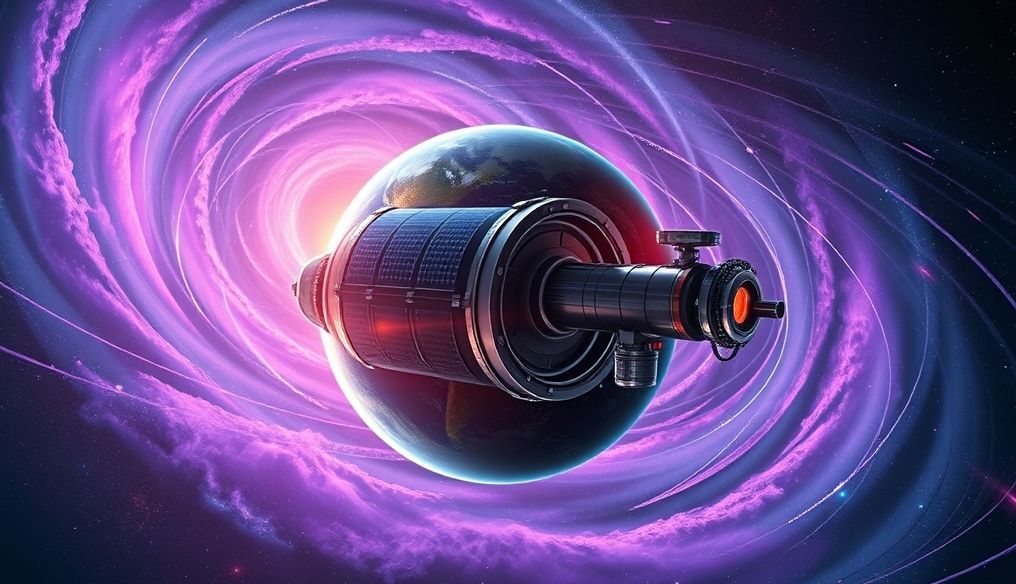Can We Really Live on Mars in the Future, and What are the Challenges and Solutions?
Mars has always fascinated humans, and the dream of living there has become a scientific and technological goal. But is this really possible? What challenges do we face, and how can we overcome them? We will answer this in this article.
Chapter 1: Mars - An Overview
Characteristics of the Red Planet
Mars, the fourth planet in our solar system, is characterized by a harsh environment. Its atmosphere is very thin, mainly composed of carbon dioxide, making it uninhabitable. Temperatures are highly variable, dropping to freezing levels. The surface of Mars is also exposed to harmful solar and cosmic radiation.
Why Mars?
Despite the challenges, Mars is considered the most realistic destination for human settlement outside of Earth. It is relatively closer to Earth compared to other planets and contains potential resources such as frozen water, which can be used to produce oxygen and fuel.
Chapter 2: Health and Biological Challenges
Cosmic Radiation
Cosmic radiation poses a significant risk to the health of astronauts. Prolonged exposure to radiation increases the risk of cancer and other diseases. Potential solutions include building underground habitats or using radiation shields.
Low Gravity
The gravity on Mars is much lower than Earth's gravity, which can lead to health problems such as bone density loss and muscle atrophy. Regular exercise and the use of technologies like artificial gravity can help mitigate these problems.
Lack of Oxygen
The Martian atmosphere does not contain enough oxygen to support human life. Technologies must be developed to produce oxygen from Martian resources, such as extracting oxygen from frozen water or using carbon dioxide in the atmosphere.
Chapter 3: Food and Nutrition on Mars
Agriculture in a Hostile Environment
Agriculture on Mars is a major challenge due to poor soil and limited water. Hydroponics and vertical farming techniques can be used in closed environments for sustainable agriculture.
Protein Production
Providing adequate protein is essential for maintaining the health of settlers. Legumes and protein-rich grains can be grown, in addition to exploring alternative protein sources such as insects or proteins produced by bacteria.
Balanced Nutrition
A balanced diet must be provided to ensure that settlers receive all the necessary nutrients. Dried and frozen foods can be used to preserve nutrients for long periods.
Chapter 4: Infrastructure and Shelter
Building Sustainable Habitats
Habitats must be built to protect settlers from radiation and harsh weather conditions. Local building materials, such as Martian soil, can be used to create strong and sustainable habitats using 3D printing technologies.
Providing Energy
Energy is essential to operate all vital systems in the settlement. Solar and wind power can be used to generate electricity, in addition to exploring small nuclear power sources.
Resource Management
Available resources must be managed efficiently to ensure the sustainability of the settlement. Water recycling and waste management systems can be used to reduce dependence on supplies from Earth.
Chapter 5: Technology and Smart Devices
3D Printing
3D printing is a crucial tool for building habitats, tools, and equipment on Mars. This technology can be used to produce almost anything from local materials.
Robotics and Automation
Robots can be used to perform dangerous and repetitive tasks, such as exploring the planet, building infrastructure, and maintaining equipment. Automation can help increase efficiency and reduce reliance on human labor.
Communications
Reliable communication with Earth is essential to maintain contact and exchange information. Satellites and laser communication systems can be used to ensure continuous connection.
Chapter 6: Life Skills and Personal Development
Adapting to a New Environment
Settlers must be able to adapt to a new and harsh environment. Resilience, problem-solving skills, and teamwork are critical skills.
Mental Health
Isolation and difficult conditions can negatively affect the mental health of settlers. Psychological and social support must be provided to ensure the well-being of settlers.
Education and Training
Settlers must be well-trained in a variety of fields, such as science, engineering, medicine, and agriculture. Continuous education and personal development are essential.
Chapter 7: Social and Cultural Aspects
Building a New Community
A new community must be built based on cooperation and mutual respect. Laws and rules governing life in the settlement must be established.
Preserving Culture
Human culture and heritage must be preserved in the settlement. Cultural and artistic events can be organized to promote communication and social cohesion.
Ethics and Values
Ethical principles and values that guide the behavior of settlers must be established. The importance of sustainability and responsibility towards the environment must be emphasized.
Chapter 8: The Future of Life on Mars
Permanent Settlement
The ultimate goal is to create a permanent and sustainable settlement on Mars. New technologies must be developed to enable settlers to be self-reliant.
Expansion and Exploration
After establishing a sustainable settlement, exploration of other parts of the planet can begin. Scientific bases and research stations can be built to study Mars.
Next Steps
Living on Mars is a major challenge, but it is not impossible. Through research, development, and innovation, we can achieve this dream and transform Mars into a new home for humanity.
Conclusion: Living on Mars is a multifaceted challenge that requires innovative solutions in the fields of health, food, energy, technology, and society. Despite the difficulties, the immense potential for discovery and scientific advancement makes this goal worthwhile.




